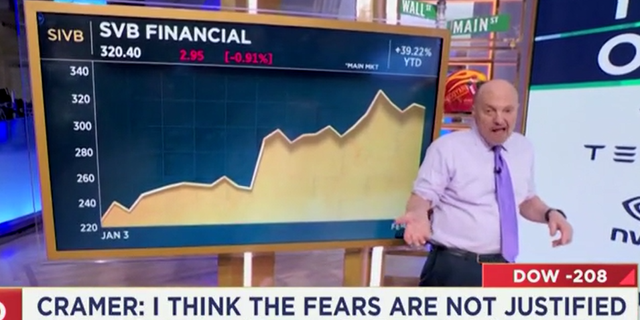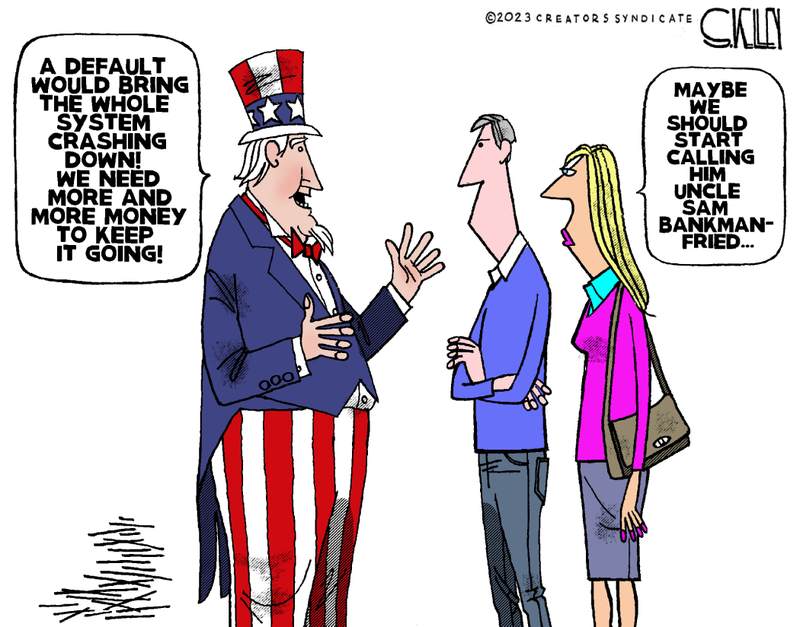Quote O’ The Day
Social Justice is bad enough by itself, but it’s also a marker for those incapable of thinking clearly enough to focus clearly on their main jobs.
More On How SVB Screwed The Pooch.
I wasn’t planning on writing more about the collapse of Silicon Valley Bank, but too much info has been coming down the pike to ignore. Plus, I found the video below, and felt I had to share it.
First up: Silicon Valley Bank donated nearly $74 million to #BlackLivesMatter and associated causes.
A newly published database from the Claremont Institute has revealed that the since-collapsed Silicon Valley Bank donated or pledged to donate nearly $74 million to the Black Lives Matter movement and related causes.
In an August 2020 Diversity, Equity & Inclusion report, SVB declared “we are on a journey committed to increasing diversity, equity and inclusion (DEI) in our workplace, with our partners and across the innovation economy.”
The bank revealed that they had donated $1.6 million to “causes supporting gender parity in innovation,” as well as $1.2 million to support “opportunities for diverse, emerging talent in innovation.”
In SVB’s 2021 Proxy Statement, the bank wrote in relation to racial and social equity that “the calls to end systemic racial and social inequities following the murder of George Floyd in May 2020 had a profound global impact.”
“We responded by expanding opportunities for dialogue, including hosting over 40 small group ‘Conversation Circles’ in which over two thirds of our employees participated in discussions about racial equity issues.”
The statement continued to say that the bank’s “DEI-focused ‘town hall’ meetings for employees were in response to our recognition of the need for greater transparency and dialogue around the racial representation of our workforce and the innovation ecosystem.”
In addition, the bank, provided “opportunities for action, mobilizing our employees and clients to join in community service through Tech Gives Back, a week of volunteer events focused in part on racial equity, social justice and access to the innovation economy,” and partnered with “Act One Ventures to launch The Diversity Term Sheet Rider for Representation at the Cap Table initiative, which advocates for venture capital firms to include in all of their term sheets a pledge to bring members of underrepresented groups into deals as co-investors.”
A 2020 letter from CEO Greg Becker stated, “In recent months, we’ve expanded our philanthropic giving through corporate donations and employee matching programs. These programs focus on pandemic response, social justice, sustainability and supporting women, Black and Latinx emerging talent and other underrepresented groups. You’ll find examples of these programs in this report, ranging from workforce development to affordable housing.”
In 2020, the bank launched its Missions program, “a software platform designed to engage employees to act in support of the causes they care about most such as voter education and racial justice and equity,” which saw employees donate $400,000 for “justice and equity for Black Americans.”
According to the Claremont Institute, an additional $250,000 was allocated by the SVB Foundation to support grants for social justice organizations including the NAACP, ACLU, and National Urban League.
SVB additionally partnered with 44 organizations focused on furthering DEI in innovation and invested in relationships with historically black colleges and universities, and hosted internships and provided tuition assistance for students from “underserved communities.”
In a Corporate Responsibility Report from 2021, SVB pledged to donate $50M in its diversity and inclusion programs and partnerships, “with a focus on women, Black and Latinx individuals.”
In May of 2021, SVB announced a proposed five-year, $11.2 billion community benefits plan in collaboration with The Greenlining Institute, an M4BL, or Movement For Black Lives, member. The Claremont Institute wrote that “that plan includes $75M in unspecified charitable contributions (also not included in our total).”
Social Justice is bad enough by itself, but it’s also a marker for those incapable of thinking clearly enough to focus clearly on their main jobs.
And now this video, which slams “Stupid Valley Bank” for its egregious stupidity and slams It’s Pat, which is these days is almost like a Hispster move (“It’s a pretty obscure bad movie, you’ve probably never heard of it”).
He also thinks the crisis is just beginning…




